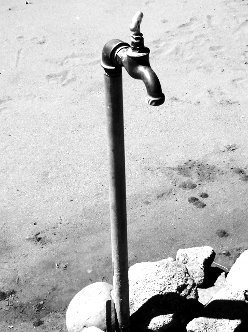Missing millions called out
 Millions of dollars allocated to provide water security for Indigenous groups in the Murray-Darling Basin has yet to be utilised, leaving some First Nations groups feeling neglected and short-changed.
Millions of dollars allocated to provide water security for Indigenous groups in the Murray-Darling Basin has yet to be utilised, leaving some First Nations groups feeling neglected and short-changed.
Funds were announced in 2018 by the former Coalition government with the goal of allowing Indigenous Australians to “economically participate in water and ensure that they get not only economic, but also cultural outcomes”.
However, no water has been purchased to date.
The current federal government recently committed an additional $9.2 million to establish a “world-leading” initiative to deliver water rights to Indigenous Australians.
However, some experts argue that the rising cost of water entitlements in the southern part of the basin has significantly diminished the value of the funds set aside.
Research firm Aither reports that groups would need 40 per cent more money today to secure the same amount of water as in 2018, indicating that the money has lost its buying power.
Tati Tati traditional owner and Murray Lower Darling Rivers Indigenous Nations (MLDRIN) deputy chair, Brendan Kennedy, says that the government's announcement had sidestepped the ongoing concerns basin nations have regarding water access.
Mr Kennedy has told reporters that the government's promise of more money is another slow, drawn-out process and is a classic example of the “divide-and-conquer” tactic.
“Our ability to participate in the water space has been lost, along with the opportunities that come with that,” he says.
Despite owning almost 40 pe rcent of land through native title, Indigenous Australians only own 0.2 percent of surface water rights in Australia.
Water Minister Tanya Plibersek says “the current arrangements for water holding isn't always appropriate for First Nations, who have their own cultural and economic needs and aspirations”.
The Commonwealth says it is intending to spend $9.2 million to “consult and design an enduring arrangement for First Nations peoples to own, access and manage water in Australia”.
The model is expected to be developed in collaboration with the Committee on Aboriginal Water Interests, the Coalition of Peaks, the Indigenous Land and Sea Corporation, and other stakeholders.
But Mr Kennedy says the statement made by the Water Minister is “disrespectful” and “insensitive”, as it implies that the current water arrangement has ever been appropriate for First Nations people.
Meanwhile, tensions have emerged over the past five years over state and territory water allocation decisions and the wishes of traditional owners, including along the Fitzroy River in Western Australia and in the Northern Territory.
While the Commonwealth cannot legislate water rights for Indigenous Australians, it can bring state and territory governments together to establish a nationally consistent framework for water governance.
The Productivity Commission called for the existing national framework, the National Water Initiative (NWI), to be overhauled, labelling it unfit for the challenges posed by population growth and climate change.
The commission also urged state and federal governments to explicitly include the aspirations of Aboriginal and Torres Strait Islander people to own water rights in any future iterations of the NWI.








 Print
Print